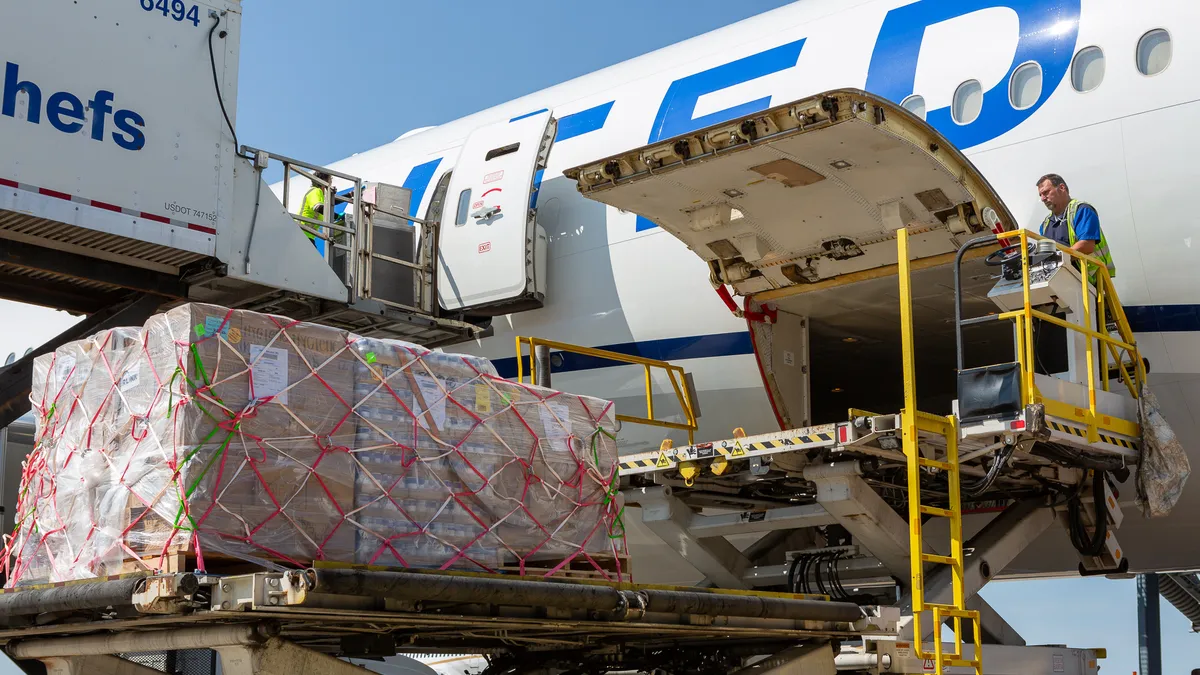Dive Brief:
- About 10% of merchandise sold in the U.S. 2018 was returned. The figure was the same in 2017 after more than a decade of relative stasis in the high single digits, according to surveys and data from the National Retail Federation and Appriss.
- Returns have grown from $171.4 billion in 2007 to $369 billion in 2018, according to Appriss.
- The slight uptick in the percentage of sales returned could be the result of e-commerce, according to Tom Rittman, the vice president of marketing at Appriss. "Online transactions have a much higher return rate than in the stores," Rittman told Supply Chain Dive. Customers who buy online might buy multiple sizes or colors to see what they like and end up returning what they don't want, he said.
Dive Insight:
Many retailers want to lower the overall number of returns, because they can be costly and lead to waste, according to Retail Dive. At the same time, consumer-friendly return policies are critical for good customer service.
A survey last year from Voxware found 88% of shoppers want to be able to return a purchase, and 95% said how easy this process is can help determine if they'll shop with the retailer again.
Companies like Walmart continue to roll out options that make it easier to return items. The reason Walmart is changing its process, according to company CEO Greg Foran, is to reduce shrinkage or the measure of sales a company missed out on as a result of inaccurate inventory.
“Managing returns not only saves [retailers] return dollars, but also saves them on their shrink number," Rittman said. "So it’s a good solution across the entire business to keep a closer eye on all your returns."

Adding to the complexity of reverse logistics are fraudulent returns. About 5% of total returns are fraudulent, according to Appriss.
Retailers have done a good job of ensuring returns fraud hasn't grown as a percentage of overall sales, according to Rittman. But bad actors are still occasionally able to take advantage of story return policies. There were about $18 billion in fraudulent returns in 2018, according to Appriss' most recent report.
How do these actors take advantage of the system? Rittman provided an example: Imagine someone buys a printer and leaves the store to put it in the car. Then, receipt in hand, the person goes back into the store, grabs a printer off the shelf and takes it to the return counter. One approved return later and, in this hypothetical scenario, this person leaves with a free printer.
Increasingly, companies are looking to technology to help them stop these kinds of returns. Appriss sells a product that retailers use to help catch return fraud.
Looking at the historical buying behavior of a shopper at the point of sale can provide some insight into whether a transaction is legitimate or warrants closer inspection. Retailers look at patterns in this information and detect anomalies using variables like the customer's purchase and return history, where they typically buy from and if a store is outside their typically purchasing region, Rittman said.
This story was first published in our weekly newsletter, Supply Chain Dive: Operations. Sign up here.














